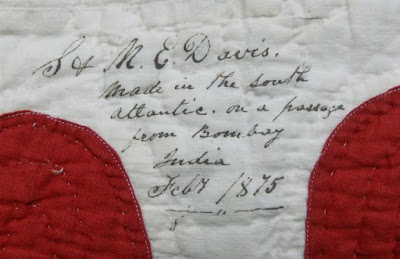We also have a
picture of the Captain and a reproduction image of the last vessel of which he
was part owner, the Tobique. The framed
photo of Davis includes an obituary underneath, stating that Captain Davis died
in the 55th year of his life leaving behind his wife Maggie and five
children Sinclair, Oscar, Percy, Wesley and Nellie. It also details his first
voyage, which was very dramatic; it “was as supercargo on a vessel built by his
father. On the return voyage the vessel was wrecked off Cape Hatteras and the
crew escaped by clinging to pieces of wreckage until land was reached.”
Davis seemed to
have a knack for getting into tricky situations on the sea, as he “next shipped
in a barque bound for England and although young his coolness and courage were
manifested when at the height of a storm the captain declared the situation
hopeless. The vessel careened so Solomon took an axe and from her broadside
parted the shrouds which allowed the spars to fall and the vessel righted thus
saving all on board.”
The Tobique was the last ship of which the
Captain was part owner. She was built in 1876 and he sailed her for 15 years,
mainly engaging in Pacific trade. It was not long after the Tobique that Davis retired; as John
Keirstead notes in From A Seadog’s
Logbook, “Capt. Davis retired from the sea after making only one voyage in
a steam vessel. He did not think that steam was any way to travel, and he was a
man of quite clearly stated thoughts.”
Life on the
water was certainly changing for all sea-going adventurers as steam came to the
fore. Remaining in the wake of this important era are some of the most unique
artifacts in our collection – symbols of a time when iron-men and wooden ships set
out to conquer the world, all from the gentle shores of Kings County.
P.S. We can
only surmise that the Captain would not enjoy our planned exhibit for Summer 2016
that will focus on Steamships in Kings County!
Thank you to summer staffer Lydia Blois for today's post!



No comments:
Post a Comment